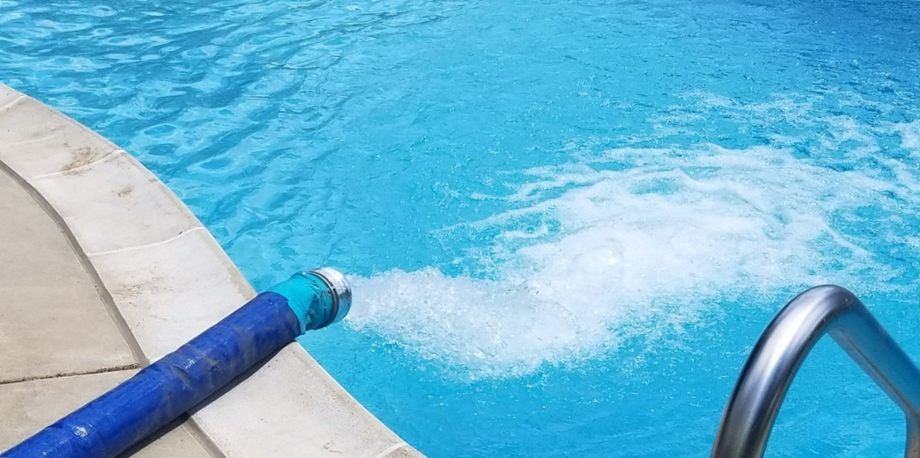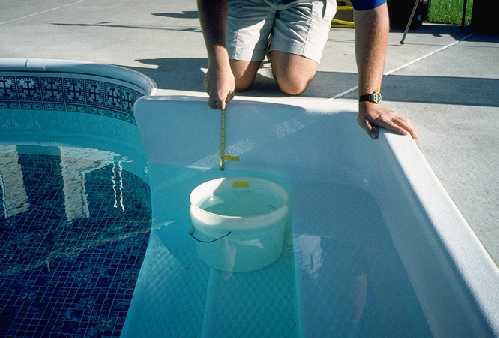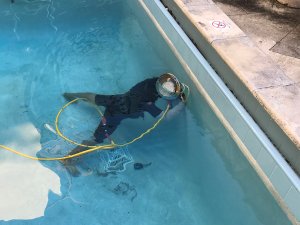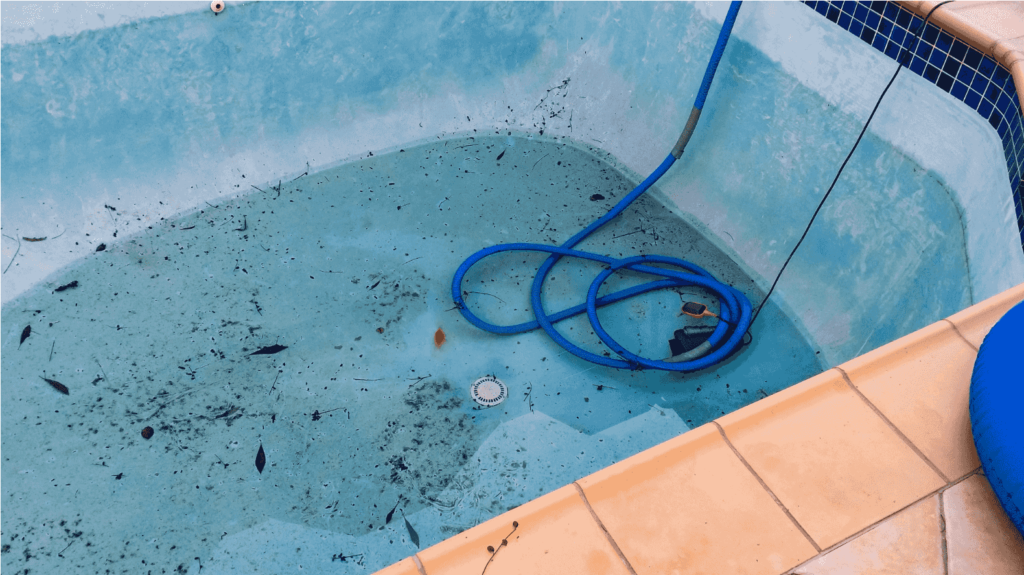
Pool Leak Detection
Do you feel you pool is leaking or even know it may be?
Do you add water when you think you should not be having to do so?
If you have this thought or feeling, there is an easy way to see if your hunch is right or not. Of course, pools loose water to evaporation so you will see this for sure, more so on hot windy, low humidity days.
To check if you pool is losing water and not by evaporation, do the following on a warm to hot sunny, windless, rainless day
- Fill the pool to its normal level and make a mark or note exactly where it is, (Smart phone image close up will often do and don’t drop the phone!).
- Take a 5 gal or similar size bucket and near fill it,and mark its level also.
- Place the said bucket on a top step or somewhere where is about half submerged in the pool water and note the time. (Early morning before the sun gets too high is best)
- Late afternoon or early evening, note the difference, if any in the levels of the water in the pool and bucket. If they both drop by say 1/2ins, then no leakage. If the pool drops 1 ins and the bucket ½ ins, the pool is leaking.
So you now know your pool is leaking but from where?

There are a few common suspects no matter the type of pool. At this stage you can call in a pool leak detector company to go over all aspects and see where the pool leak is. Or you can save money at this point and do some detective work yourself, to pinpoint the lucky location.
It depends on your preferred option. Here is a sequence of steps you can take to start with.
Let the pool level drop till it stops. If at or just below the skimmer box, then the leak is there or in the pipework connecting it.
If it drops down further to a point where you have a water entry pipe or light fittings and stops, then the leak is mostly likely at one of those points.
If the water level drops to being almost empty, its more than likely the hydrostatic valve. Of course, if it just stops at some other point, then there will be a crack or hole in the pool itself, that is the culprit.
With letting the water continue to drop below say half full be mindful there is lot of water going someplace and your pool, fiberglass especially, will become unstable and may move, creating additional issues.
Ideally you should not let the water level drop more than 1 – 2 ft and if no obvious issue found or seen, its probably a good time to call in a leak detector.

Be aware that clay soils and some other (reactive) soils also, vary in their stability and load carrying capacity as they get wet (rain, pool leakages or broken waterpipes) and then dry out. It’s quite usual for pool shells (fiberglass more so) to move slightly when this happens. In so doing, on a regular or only once off basis, fracturing the (aged) pipework where it exits the pool shell, creating the leak. It’s often the cause of many pool leaks. A leaking aged hydrostatic value is also common. If so, your pool will need to be emptied to replace it.
Be aware that concrete pools (gunite) are NOT waterproof everywhere or indeed anywhere and so there may be an area of porous concrete that provides a slow leak.
The plastered or mineral surfaces are not waterproof either, only a good quality well installed coating would be water proof. (e.g. PaintnForget).
For fiberglass the gel coat, that decorative protective top layer slowly wears through, and you may see glass fibers. At this point a FG pool is no longer water tight either.
Vinyl liners may develop small splits or holes and so will loose water to the space behind, which may not be waterproof either and so the water leaves the pool “shell”.
In summary many pools leak a little and its not a big issue. However, if you start to be adding water on a 2 – 3 times a week basis, it is time to seek out the problem and then get it fixed.

